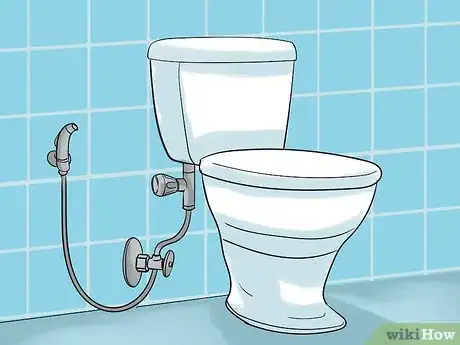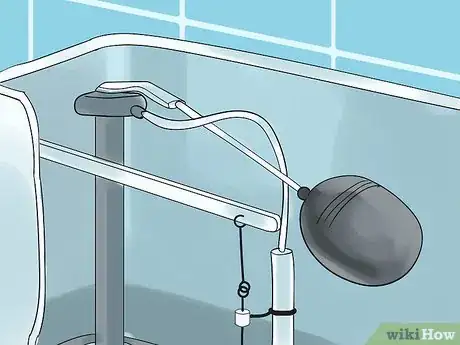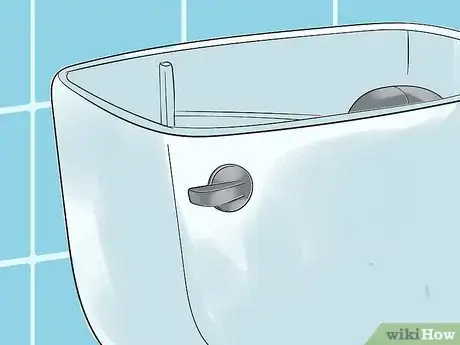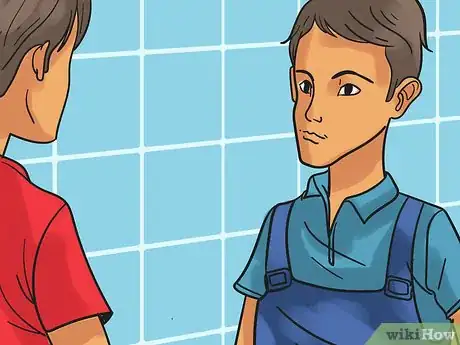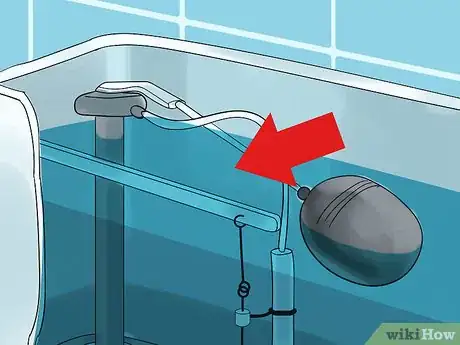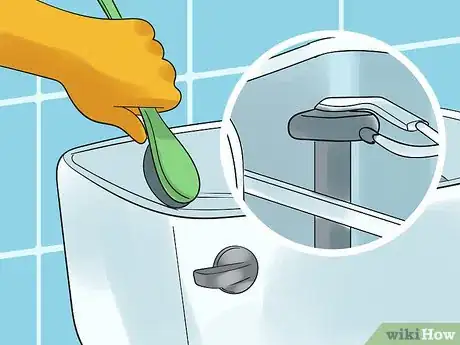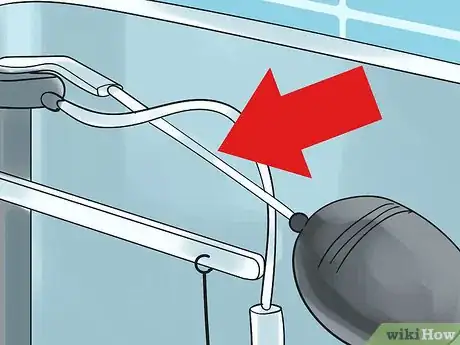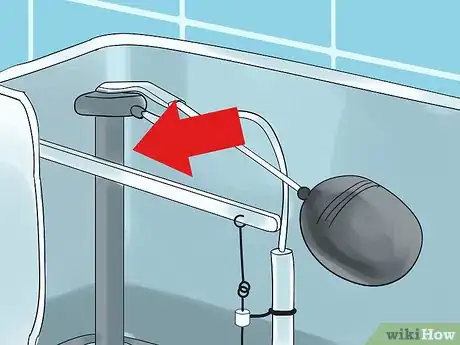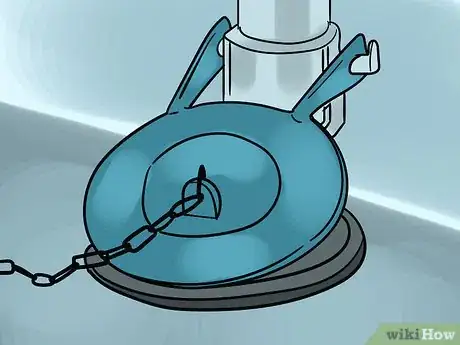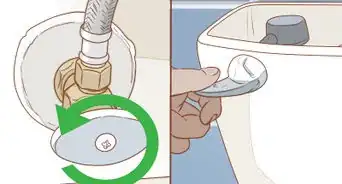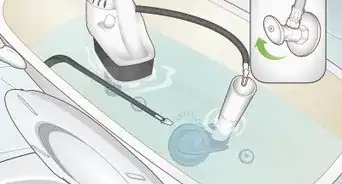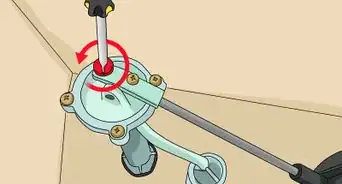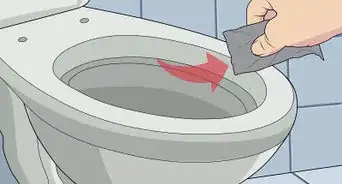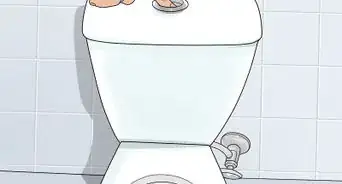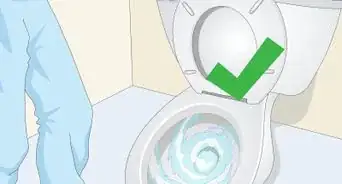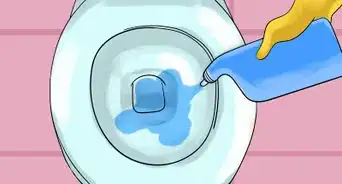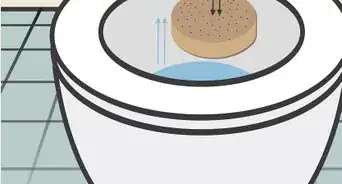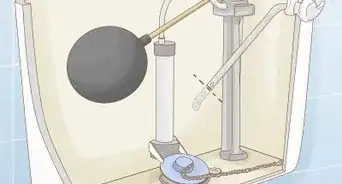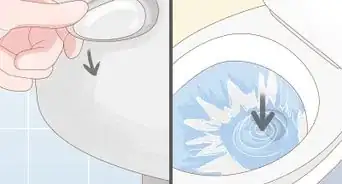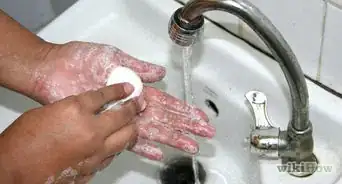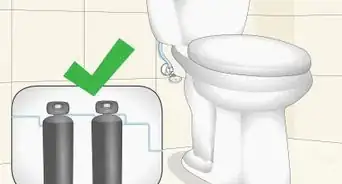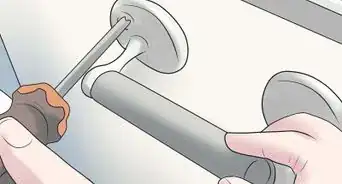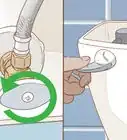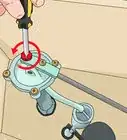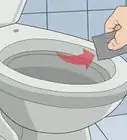This article was co-authored by James Schuelke. James Schuelke, along with his twin brother David, is the co-owner of the Twin Home Experts, a licensed plumbing, leak detection, and mold inspection company based in Los Angeles, California. James has over 32 years of home service and business plumbing experience and has expanded the Twin Home Experts to Phoenix, Arizona and the Pacific Northwest.
This article has been viewed 40,358 times.
Toilets can make loud noises for a variety of reasons. Wear and tear or broken parts are usually to blame, but finding that problem can be a challenge. In order to repair a noisy toilet you will need to assess the toilet function, spot problems, and fix any issues you find. If you can do this, you can eliminate the bad noises coming from your toilet.[1]
Steps
Finding the Problem
-
1Make sure the lid is on securely. A heavy toilet lid can damper a lot of sound if it is placed on the toilet tank correctly. Thus, if the lid of your toilet is not completely in place, you may hear more noises than normal. Wiggle the lid around a bit to make sure it is seated properly.
- Before troubleshooting for a more severe problem, making sure that the lid is in place can save you a lot of time and headache.
-
2Get to know the parts of your toilet. A toilet has a variety of parts that could be causing the noise. In order to figure out what the problem is, you will need to familiarize yourself with the basic internal parts of a toilet. Inside the tank of your toilet there is a:[2]
- Flapper: The flapper is connected to the toilet handle so that when you flush the toilet, the flapper is lifted. This releases the water in the tank.
- Float: The float can come in a variety of forms, usually a float ball or a float cup. It responds to the water level in the tank. When the water has filled back up in the tank, the float lifts high enough to switch off the water coming through the fill valve.
- Fill valve: Also sometimes called a flush valve, this valve is responsible for allowing water into the tank. It is turned on and off by the position of the float.
- Lever: The lever is the handle that you push down to flush the toilet. Inside the tank, it's connected to the flapper. If it's not connected correctly, then the toilet may run for long periods of time or fail to properly flush.
Advertisement -
3Wait for the noise to occur. In order to find a problem, it is usually necessary for that problem to be occurring. Don't assume that a problem will be immediately evident even when it is not actively happening.
- Take the cover off the tank so that you can hear any sounds coming from inside it. This is an area that noises often come from.
- It may take some time and patience, but wait until the noise is happening to sleuth out the problem.
-
4Know when to hire a professional. Many small problems with a toilet can be fixed by you easily. However, depending on your skill level, there are some times when a professional plumber can be of great use. If you have tried your best to fix a problem but you just can't figure it out, call a plumber to come help you out.
- Don't think of hiring a plumber as a failure on your part. Plumbers are actually skilled workers who have spent a lot of time building up their expertise. Why not hire an expert?
-
5Try a quiet fill flush valve if you know the toilet is working properly. Sometimes a toilet is working fine but is close to a bedroom or living area, making its noise more noticeable. If this is the case, your best option could be a quiet fill flush valve, which reduces the amount of noise your toilet makes while it's running.
Reducing Noise When the Toilet Fills
-
1Assess the water flow pressure into the tank. If the water pressure is too high or too low, it can create noise in the water flow valve. In order to assess the water pressure of the water coming out of the fill valve, pull off the refill hose right where it connects to the fill valve. Be careful, as water will be flowing if this is done while the toilet is filling.[3]
- If there is a strong stream of water coming out, then the water pressure may be too high. If this is the case, try turning the water valve at the base of the toilet partly down, reattach the hose, and try flushing again. The lowered pressure may eliminate the noise.
- If the water pressure into the toilet is very low, then you will need to increase it.[4] This will require you to investigate the fill valve a little further.
-
2Clean out the fill valve. If the water pressure is too low, it may be restricted while it goes through the fill valve. In order to assess this, you will need to take the top of the fill valve off and clean it out. First, turn off the water to the toilet. Then, take the top of the fill valve. Look for debris that could be impacting the water pressure.[5]
- To clean out the valve you will need a large cup that you can hold over the top of it. With the top of the valve off, place the cup over the top and turn the water back on for a few seconds. The water should shoot up into the cup, taking all debris and gunk that was in the valve with it. Then, turn the water off and replace the valve cap.
-
3Replace the fill valve if necessary. If you have cleaned out your fill valve and it is still making a lot of noise when the toilet tank fills, then you may need to replace it. Turn the water to the toilet off and then drain the tank by flushing the toilet.[6] Remove the existing fill valve and take it with you to your local home improvement or hardware store.[7]
- By having the existing fill valve with you, you can be sure to get a replacement that will fit your toilet.
- Ask an employee at the store to help you if you are unsure how to find the right part.
- Take the replacement part home and follow the instructions it comes with to install it correctly.
Stopping a Running Toilet
-
1Assess the float adjustment. Open the tank and lift up on the float arm. If the toilet stops running when the float is lifted slightly higher than it sits in the water, then you need to readjust its position.[8]
- Adjusting the float position is done differently on different toilet assemblies. In some cases there is an adjustment screw on the top of the fill valve. In other cases, it is done on the pole the float is attached to. You will need to assess your specific toilet assembly to figure out how.
-
2Check the fill valve function. Another problem that can cause the toilet to run is when the fill valve malfunctions. In some cases, it does not turn off the water when it should, thus allowing the toilet to run constantly. If this is the case it needs to be replaced.[9]
- Check the function of your fill valve by lifting up on the toilet float. If the valve shuts off water flow when the float is lifted, then it is working fine. If it does not, then it is the problem.
-
3Check for flapper seal misalignment. Sometimes a toilet runs because water is slowly leaking out of the bottom of the tank, into the toilet bowl. This happens when the seal at the bottom of the tank, often called the flapper, is dirty, misaligned, or damaged. To assess your toilet's seal, first turn off the water to the toilet and then empty the tank by flushing the toilet. Then take a look at the seal.[10]
- Make sure that the lever, chain, and flapper are adjusted correctly. Check that the chain is not broken, worn, or kinked. It should also not slide under flapper after you flush, which will let water slip through.
- You can use a dye test to check for slow leaks into the bowl. If you put a few drops of food coloring in the water in the tank and leave the toilet untouched for several hours, if there is a leak into the bowl the bowl water will be colored.
- If the seal at the bottom of the tank looks dirty and grimy, take the time to clean it off. This could be the solution to your problem.
- If the seal doesn't completely cover the opening at the bottom of the toilet tank, then it needs to be realigned so that it does.
- If the seal at the bottom of the tank has a crack in it, or is otherwise damaged, than it needs to be replaced.
Community Q&A
-
QuestionWhy does the toilet flush properly sometimes and then won't flush properly the next several times?
 Community AnswerI'd suspect a blockage or corroded mostly-shut cast iron drain pipe immediately under the toilet. The first flush fills up to the blockage, so it only appears to work fine. Subsequent flushes, which could be hours apart, then stack on top of what still hasn't drained away and the toilet barely drains at all or almost overflows to drain extremely slowly. Likely, using a plunger won't do anything. If it's a blockage or partial blockage, you'll need to snake the drain pipe and bust through to free the blockage. If it's a corroded end of the pipe, you'll need to chisel that open again and vacuum out the chiseling after removing the toilet. Gently snake the bowl's internal pipe clear also.
Community AnswerI'd suspect a blockage or corroded mostly-shut cast iron drain pipe immediately under the toilet. The first flush fills up to the blockage, so it only appears to work fine. Subsequent flushes, which could be hours apart, then stack on top of what still hasn't drained away and the toilet barely drains at all or almost overflows to drain extremely slowly. Likely, using a plunger won't do anything. If it's a blockage or partial blockage, you'll need to snake the drain pipe and bust through to free the blockage. If it's a corroded end of the pipe, you'll need to chisel that open again and vacuum out the chiseling after removing the toilet. Gently snake the bowl's internal pipe clear also.
References
- ↑ https://www.thisoldhouse.com/how-to/how-to-fix-leaky-or-runny-toilet
- ↑ https://www.thisoldhouse.com/how-to/how-to-fix-leaky-or-runny-toilet
- ↑ http://www.fluidmaster.com/toilet-problems/determining-toilets-noise-fix/#FILL
- ↑ James Schuelke. Professional Plumber. Expert Interview. 1 October 2019.
- ↑ http://www.fluidmaster.com/toilet-problems/determining-toilets-noise-fix/#FILL
- ↑ James Schuelke. Professional Plumber. Expert Interview. 1 October 2019.
- ↑ http://www.fluidmaster.com/toilet-problems/determining-toilets-noise-fix/#FILL
- ↑ http://www.familyhandyman.com/plumbing/toilet-repair/fix-a-running-toilet/view-all
- ↑ http://www.fluidmaster.com/toilet-problems/determining-toilets-noise-fix/#FILL
